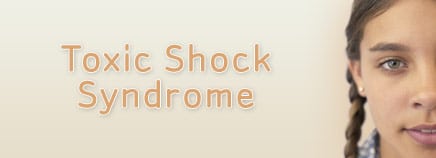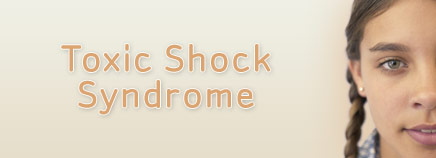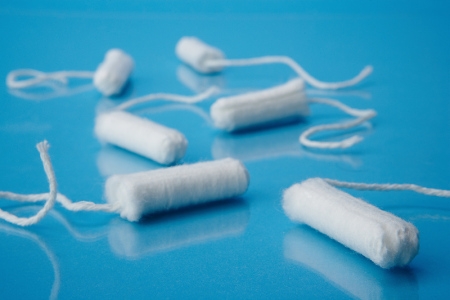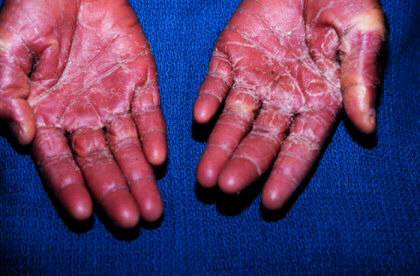Straight, No Chaser has addressed Staphylococcus (aka Staph) infections on several occasions; in fact, Staph is the microorganism that is responsible for all those MRSA (methicillin-resistant Staph Aureus) infections that the general public holds in such fear. Toxic shock syndrome is also primarily caused by Staph. The early take home message is you just don’t want to get this infection, and you would really do well to learn and practice preventive measures to avoid Staph infections. You may not have known it, but part of your big talks with your children about hygiene (e.g. feminine hygiene and keeping object out of your body) occur with this in mind.
Toxic shock syndrome (TSS) is a very serious disease combining fever, shock and dysfunction of several bodily organ systems. There was a time when TSS was a much bigger deal, back when extra absorbent tampon usage was very high. Tampon usage has declined as the dominant cause of TSS, but TSS cases are still around and are every bit as dangerous. The toxic part of the name refers to Staph (or in a similar syndrome, an organism called Streptococcus) releasing a toxin that travels through the body causing havoc. Picture a microorganism releasing a series of hand grenades into your blood stream, and you’ll get the picture.
Having an infection is not enough to develop toxic shock syndrome; not everyone with a Staph infection develops TSS. Here are risks for developing the disease.
- Burns
- Menstruation
- Presence of foreign bodies or packings (e.g. “lost” tampons, surgical tissues or any other objects in your body parts, nasal packings used to treat nosebleeds)
- Recent childbirth
- Staph infection
- Surgery
- Tampon use (especially if you leave one in for a long time)
- Wound infection after surgery
There’s not a lot of guesswork with a patient with toxic shock syndrome. The other meaning of toxic in the name is patients are very ill. By the time they come in for treatment, they tend to be confused with a low blood pressure. They may exhibit nausea, vomiting and diarrhea. High fever, chills, muscles, headaches and a violent-appearing rash resembling sunburn are to be expected. Untreated, the toxins can cause seizures and failure of multiple organ system of the body.
Treatment of toxic shock syndrome is complicated and critical, addressing a critically ill patient in shock, preserving the body’s organ systems, treating an infection, removing any foreign objects found and draining any infections (such as a surgical wound). Patients with toxic shock syndrome often find themselves in intensive care units, and the mortality rate (those who die) approaches 50%.
Your best bet in avoiding toxic shock syndrome is practicing good hygiene and avoiding the use of highly absorbent tampons. If you do use tampons, change them frequently (as directed); it’s just not a good idea to leave them in for extra periods of time trying to be frugal. Similarly the presence of any other cloth material retained anywhere inside of you (e.g. objects broken off in the ear, certain types of vaginal or anal instrumentation) is to be avoided. If you ever receive a nasal packing for a nosebleed, you should be placed on antibiotics at the same time. Be diligent after surgery, looking for any signs of fever or infection at the surgical site. Get significant burns treated.
This is something you should think about. Your simple steps of prevention really can be life-saving. I welcome your questions.
Thanks for liking and following Straight, No Chaser! This public service provides a sample of what 844-SMA-TALK and http://www.SterlingMedicalAdvice.com (SMA) offers. Please share our page with your friends on WordPress. We are also on Facebook at SterlingMedicalAdvice.com and Twitter at @asksterlingmd.





Good Morning. Are you aware of my car accident? I will be in recovery until October.